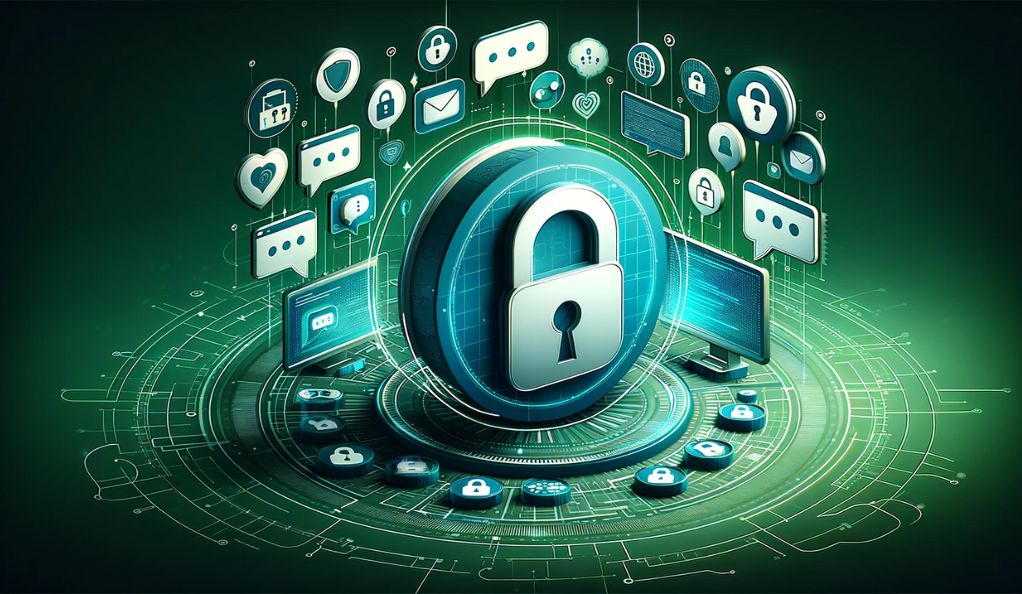In our fast-paced digital world, the way we communicate has transformed dramatically. With a single click, we can share our thoughts, ideas, and personal information with anyone across the globe. However, this convenience comes with its risks. Our online conversations are not just between us and the intended recipient; they are potentially accessible to hackers, corporations, and even governments. This raises a critical question: how can we ensure our digital conversations remain private and secure?
This guide is designed to address that very concern. It’s crafted for anyone who wishes to understand the importance of secure communication and seeks practical ways to protect their online conversations. Whether you’re chatting with friends, discussing sensitive information with colleagues, or simply wanting to safeguard your personal data, the strategies and tips outlined here will empower you to take control of your digital privacy.
We will explore various aspects of secure communication. We’ll delve into the common risks associated with online conversations, the fundamental principles of digital privacy, and the tools and technologies available to keep your communications secure. We will also provide straightforward, easy-to-implement advice that you can apply in your daily digital interactions.
Understanding and implementing secure communication practices is not just a technical necessity; it’s a crucial step towards safeguarding your personal freedom in the digital age. So, let’s begin this journey towards more secure and private online communications.
Understanding the Risks
In today’s online world, secure communication is more important than ever. As we connect and share information digitally, various risks threaten our privacy and data security.
Common Threats to Online Conversations
The digital landscape is fraught with dangers like hacking, phishing, and malware. These threats can lead to unauthorized access to personal conversations and sensitive information. Hackers use sophisticated techniques to breach communication systems, while phishing scams trick individuals into revealing confidential data.
- Hacking: Involves unauthorized access to your conversations.
- Phishing: Scams designed to steal sensitive information.
- Malware: Malicious software that can compromise communication security.

Real-World Implications of Insecure Communication
The consequences of insecure communication are far-reaching. Identity theft, financial loss, and damage to personal and professional reputations are common outcomes. In the business world, a breach can lead to the loss of critical corporate information, eroding trust with clients and partners.
- Identity Theft: Personal information is stolen and misused.
- Financial Loss: Direct result of data or monetary theft.
- Reputation Damage: Both individuals and businesses can suffer from tarnished reputations.
Basic Principles of Secure Communication
Secure communication is foundational in protecting our online interactions. By understanding and applying some basic principles, we can significantly enhance our digital security and privacy.
Encryption: The Cornerstone of Privacy
Encryption is the process of converting information into a secret code that hides the true meaning of the data. It’s crucial for protecting sensitive information from being accessed by unauthorized parties. When you use encrypted messaging apps or secure email services, your information is turned into a code that only the intended recipient can decode.
- End-to-End Encryption: Ensures only you and the recipient can read the conversation.
- Data Encryption: Protects files and emails from unauthorized access.
Strong Passwords and Two-Factor Authentication
Another key aspect of secure communication is the use of strong passwords and two-factor authentication (2FA). A strong password is unique and complex, making it difficult for others to guess. 2FA adds an extra layer of security by requiring a second form of identification, such as a text message code or fingerprint, in addition to your password.

- Strong Passwords: Should be a mix of letters, numbers, and symbols.
- Two-Factor Authentication: An additional step to verify your identity.
Implementing these basic principles is a straightforward yet effective way to safeguard your digital conversations. By prioritizing encryption and robust authentication methods, you’re taking significant steps towards secure communication.
Tools and Technologies for Secure Conversations
In the realm of digital communication, several tools and technologies are designed to ensure that your conversations remain private and secure. From encrypted messaging apps to secure email services, these tools play a vital role in safeguarding your online communication.
Encrypted Messaging Apps
Encrypted messaging apps are a popular choice for secure conversations. These apps use end-to-end encryption, ensuring that only you and the person you’re communicating with can read the messages. Some well-known encrypted messaging apps include Signal, WhatsApp, and Telegram. They offer features like self-destructing messages and secure file sharing, providing an extra layer of security.
- Signal: Known for its strong encryption protocols.
- WhatsApp: Offers end-to-end encryption for messages and calls.
- Telegram: Provides optional end-to-end encrypted “secret chats”.
Secure Email Services
For more formal communication, secure email services are essential. These services use encryption to protect the contents of your emails. Providers like ProtonMail and Tutanota offer encrypted email solutions that are easy to use, ensuring that your email communications are protected against prying eyes.
- ProtonMail: Offers encrypted email services with a user-friendly interface.
- Tutanota: Provides end-to-end encrypted emails and has a free version available.
Choosing the right tools and technologies for secure conversations is crucial in today’s digital age. By using these encrypted platforms, you can communicate with peace of mind, knowing that your conversations are protected.
Best Practices for Individuals and Teams
Adopting best practices in secure communication is vital for both individuals and teams. These practices help to ensure that personal and professional conversations remain confidential and secure.
Guidelines for Personal Communication
For individuals, the key to secure communication lies in being vigilant and informed. Always be cautious about the information you share online, especially on public platforms. Use encrypted messaging apps for private conversations and be wary of phishing scams. Regularly updating passwords and using two-factor authentication can significantly enhance your personal communication security.
- Be Cautious: Think before you share information online.
- Use Encrypted Apps: For private conversations.
- Stay Informed: Be aware of the latest security threats.
Creating a Secure Communication Culture in Teams
In a professional setting, creating a culture of secure communication is crucial. Teams should use secure collaboration tools and ensure all members are trained on the importance of data privacy. Regular security audits and clear guidelines on handling sensitive information are essential. Encourage open discussions about security and provide regular updates on best practices.

- Use Secure Tools: For team collaboration and communication.
- Training and Awareness: Regularly educate team members on security best practices.
- Security Audits: Conduct them to identify and address vulnerabilities.
By following these best practices, both individuals and teams can significantly reduce the risk of security breaches and ensure their communication remains secure and private.
Staying Updated: The Key to Ongoing Security
In the ever-evolving landscape of digital security, staying informed and updated is crucial for maintaining the safety of your online conversations. Keeping abreast of the latest trends, threats, and updates in security technology is essential for both individuals and organizations.
Importance of Software Updates and Security Patches
Regularly updating your software and applying security patches is one of the simplest yet most effective ways to protect your digital communication. These updates often include fixes for security vulnerabilities that hackers could exploit. Ensure that your operating system, applications, and security software are always up-to-date.
- Regular Updates: Keep your software and applications current.
- Security Patches: Apply them promptly to fix vulnerabilities.
Awareness of the Latest Security Threats and Trends
Staying informed about the latest security threats and trends is equally important. This can involve following trusted cybersecurity news sources, participating in online security forums, or attending webinars and workshops. Being aware of new types of phishing scams, malware, or hacking techniques helps you to better defend against them.
- Follow Cybersecurity News: Stay informed about new threats.
- Participate in Security Communities: Engage in forums and discussions.
Conclusion
Throughout this guide, we have navigated the essential aspects of secure communication, from understanding the risks to implementing best practices for individuals and teams. We’ve explored the significance of encryption, the necessity of strong passwords and two-factor authentication, and the importance of choosing the right tools and technologies. Creating a culture of security within teams and staying updated on the latest security trends are crucial steps in safeguarding our digital conversations. By applying these principles and strategies, we can enhance our online privacy and protect our conversations from potential threats, ensuring a safer digital environment for both personal and professional interactions.








